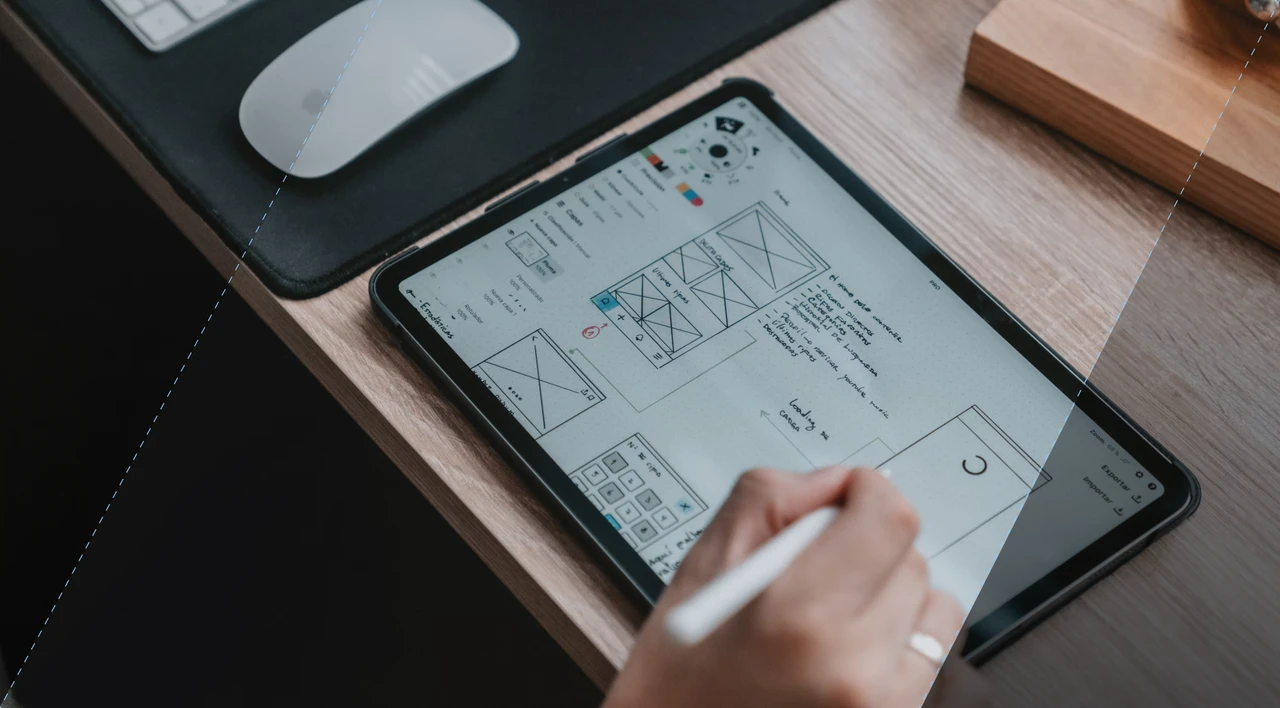SHARE
Navigating Within-Subjects Design in UX Research

Contents
Contents
The global user experience (UX) research software market size is forecast to reach US$ 949.44 million by the end of 2032. Do you want to optimize your user experience research? Have you ever wondered how researchers gain valuable insights into users’ experiences? Understanding within-subjects design is the key to unlocking deeper user insights in UX research.
With every dollar invested in UX generating a return of $100, the importance of UX design should not be overlooked. Within-subjects design is a research methodology that allows researchers to measure the effects of different variables on the same participants. By repeatedly measuring participants’ responses under different conditions, researchers can gain a comprehensive understanding of user experiences and make informed design decisions.
In this article, we will provide you with a comprehensive guide to within-subjects design in the context of UX research. We will explore the key characteristics of within-subjects design, compare it with other research designs, and provide practical tips for implementing within-subjects design in web development.
Key Takeaways:
- Within-subjects design allows researchers to measure the effects of different variables on the same participants, providing deeper insights into user experiences.
- Repeated measures and counterbalancing are key characteristics of within-subjects design.
- Within-subjects design is effective in reducing learning effects, requiring fewer participants, and minimizing random noise.
Delving into Within-Subjects Design
Organizations that have well-established UX research practices report a 1.9x increase in customer satisfaction. In this section, we will delve deeper into within-subjects design. We will discuss the key characteristics of within-subjects design, including the use of repeated measures and counterbalancing. We will also provide examples of how within-subjects design is applied in UX research, showcasing its effectiveness in understanding user experiences.
Key Characteristics of Within-Subjects Design
Within-subjects design is characterized by its use of repeated measures, meaning that each participant is exposed to multiple conditions or treatments. This allows researchers to compare the same individual’s responses under different conditions, minimizing individual differences and increasing the sensitivity of the design. Counterbalancing is another key characteristic of within-subjects design, which ensures that the order in which the conditions are presented does not bias the results.
Within-Subjects Design Examples in UX Research
Within-subjects design is widely used in user research to gain a comprehensive understanding of user experiences across different interfaces or design variations. By exposing participants to various versions of a website or app, researchers can assess the impact of different design elements on user satisfaction, efficiency, and overall experience. For example, given that 38% of users will leave a page if its layout or content is unattractive, researchers may analyze how changes in website layout affect users’ behavior.
Comparing Research Designs
Advantages of Within-Subjects Design
When it comes to conducting research, choosing the right design is crucial for obtaining reliable and meaningful results. Within-subjects design is one such approach that offers unique advantages in UI/UX design services. By using a within-subjects design, researchers can leverage the benefits of repeated measures and counterbalancing to gain deeper insights into user experiences.
One of the main advantages of within-subjects design is the ability to reduce learning effects. With this design, participants are exposed to different conditions or treatments, allowing researchers to effectively compare and analyze the impact of these variables on user behavior. By minimizing the common problem of learning effects, within-subjects design enables a more accurate evaluation of user preferences and responses.
Furthermore, within-subjects design requires fewer participants compared to other research designs, such as between-subjects design. This reduction in participant numbers not only saves resources but also enables researchers to allocate more time and attention to each individual. Consequently, this approach allows for a more in-depth understanding of user experiences and a more comprehensive analysis of the data.
Another advantage of within-subjects design is its ability to minimize random noise. By comparing participants’ responses within themselves, rather than across different individuals, within-subjects design accounts for individual differences and variability, allowing researchers to focus on the true effects of the variables under investigation. This leads to more robust and reliable conclusions that can inform the design and development of better user experiences.
Within vs. Between-Subjects Design: A Comparative Analysis
While within-subjects design offers several advantages, it is essential to consider the strengths and weaknesses of other research designs, particularly between-subjects design, to make an informed choice. Both approaches have their merits and can provide valuable insights.
|
Advantages |
Within-Subjects Design |
Between-Subjects Design |
|
Reduced learning effects |
✓ |
✗ |
|
Requires fewer participants |
✓ |
✗ |
|
Minimizes random noise |
✓ |
✗ |
|
Allows for individual differences |
✓ |
✗ |
|
Controls for order effects |
✓ |
✗ |
|
Controls for carryover effects |
✓ |
✗ |
|
Requires multiple treatment conditions |
✓ |
✗ |
|
Allows for evaluation of individual differences in treatment effects |
✓ |
✗ |
|
Explores group differences |
✗ |
✓ |
|
Evaluates potential treatment interactions |
✗ |
✓ |
The table above highlights some key advantages of within-subjects design over between-subjects design. However, it is important to note that each design has its own specific purposes and considerations. Researchers should carefully weigh the pros and cons of each approach to select the most suitable design for their specific research goals and constraints.
Implementing Within-Subjects Design in Web Development
As outlined, implementing within-subjects design involves using the same group of participants to test different variables within a website or application, providing direct insights into how changes can impact user experience. This approach can be especially valuable in custom web development services, where understanding nuanced user interactions can drive design decisions.
In order to effectively utilize within-subjects design, there are several practical tips that can greatly enhance the execution of within-subjects studies. By incorporating these strategies, researchers can overcome challenges and ensure accurate and meaningful results.
Practical Tips for Executing Within-Subjects Studies
- Implement Counterbalancing: To minimize potential biases and confounding effects, counterbalancing should be implemented in within-subjects studies. By systematically altering the order of conditions or tasks across participants, the impact of any ordering effects can be effectively controlled.
- Employ Randomization: Randomization plays a crucial role in within-subjects design by assigning participants to different conditions or sequences randomly. This helps to distribute potential confounding factors evenly across participants, leading to more accurate and unbiased results.
- Ensure Sufficient Rest Periods: Within-subjects studies often involve multiple sessions or conditions. Market research experts have recommended 20 minutes as the maximum length of web surveys. To mitigate carryover effects and reduce participant fatigue, it is essential to include sufficient rest periods between tasks or conditions. This allows participants to refresh their cognitive resources and approach each task with optimal attention and engagement.
- Consider Counterbalancing Order Effects: When utilizing within-subjects design, order effects can influence the results. To minimize the impact of counterbalancing order effects, researchers can implement Latin Square designs or other advanced counterbalancing techniques.
Overcoming Challenges in Within-Subjects Design
Implementing within-subjects design can come with its own set of challenges. However, with the right strategies and approach, these challenges can be successfully overcome:
- Learning Effects: Within-subjects studies can be affected by participants’ learning effects, particularly if they complete the same task multiple times. To mitigate this challenge, researchers can incorporate measures to control learning, such as providing practice sessions or counterbalancing task sequences.
- Order Effects: The order in which participants experience different conditions or tasks can influence their responses. To address order effects, researchers should apply counterbalancing techniques and consider randomizing the order of conditions.
- Carryover Effects: Carryover effects occur when the experience of one condition or task influences participants’ performance in subsequent conditions. By incorporating rest periods and designing appropriate task sequences, researchers can minimize the impact of carryover effects.
- Time Constraints: Within-subjects studies often require more time and resources compared to between-subjects designs. Researchers should carefully plan and allocate sufficient time for data collection, analysis, and interpretation.
- Data Analysis: The analysis of within-subjects data can be complex due to dependencies between observations. Researchers should utilize appropriate statistical techniques, such as repeated measures ANOVA or multilevel modeling, to accurately analyze within-subjects designs.
By implementing these practical tips and overcoming the challenges associated with within-subjects design, researchers can effectively employ this research approach in web development and gain valuable insights into user experiences.
Conclusion
Within-subjects design plays a crucial role in UX research, providing valuable insights into user experiences. Throughout this article, we have explored the key characteristics of within-subjects design and its implementation in web development. By using repeated measures and counterbalancing, within-subjects design allows researchers to gather comprehensive data by studying the same participants in various conditions.
The advantages of within-subjects design are evident. Not only does it reduce learning effects and random noise, but it also requires fewer participants, making it a cost-effective research approach. However, it is important to acknowledge the challenges that come with within-subjects design, such as sample size considerations and the need for diligent data analysis.
In conclusion, within-subjects design offers a powerful framework for understanding user experiences in UX research. By carefully executing within-subjects studies and addressing the challenges that arise, researchers can optimize their methodologies and uncover valuable insights. If you are looking for help incorporating within-subjects design into your web development processes to enhance user-centric experiences, read more about Flatirons’ UI/UX design services.
Frequently Asked Questions
What is a within-subjects design?
A within-subjects design, also known as a repeated measures design, is a research design where participants are exposed to multiple conditions or treatments. In this design, each participant serves as their own control, providing data for each condition being tested. This design allows researchers to compare the effects of different conditions within the same group of participants.
Can you provide an example of a within-subjects design in UX research?
In a UX research study, a within-subjects design could involve testing a website’s usability by having participants complete a set of tasks using two different website designs. Each participant would use both designs, with the order of presentation counterbalanced to eliminate any potential bias. By using a within-subjects design, researchers can directly compare the usability of the two designs within the same group of participants, reducing the influence of individual differences.
What are the advantages of a within-subjects design compared to a between-subjects design?
One advantage of a within-subjects design is that it reduces the impact of individual differences, as participants serve as their own control. This design also requires fewer participants compared to a between-subjects design, as each participant contributes data for multiple conditions. Additionally, a within-subjects design can help minimize random noise and increase statistical power, making it easier to detect significant effects.
How does within-subjects design differ from between-subjects design?
Within-subjects design involves testing the same group of participants under different conditions, whereas between-subjects design involves assigning participants to different groups, with each group experiencing only one condition. Within-subjects design allows for direct comparisons within the same group, while between-subjects design allows for comparisons between different groups. Each design has its own strengths and weaknesses, which should be considered based on the research objectives and constraints.
What practical tips can you provide for implementing within-subjects design in web development?
When implementing within-subjects design in web development, it is important to carefully consider the sample size, as having a sufficient number of participants can enhance the reliability of the results. Counterbalancing the order of conditions presented to participants can help mitigate any order effects. Additionally, thorough data analysis techniques, such as using appropriate statistical tests, should be employed to interpret the findings accurately.
What are some common challenges faced in within-subjects design, and how can they be overcome?
One common challenge in within-subjects design is dealing with carryover effects, where performance in one condition is influenced by prior conditions. This can be overcome by introducing a washout period between conditions or balancing the order of conditions across participants. Another challenge is managing participant attrition, which can be addressed by recruiting additional participants or implementing strategies to minimize dropouts, such as offering incentives or maintaining good communication with participants.
UI/UX Design Services
UI/UX design services tailored for your unique needs.
Get the CEO's Take
Handpicked tech insights and trends from our CEO.
UI/UX Design Services
UI/UX design services tailored for your unique needs.
Get the CEO's Take
Handpicked tech insights and trends from our CEO.

Digital Product Development: Enhance Your Business Offerings
Flatirons
Sep 12, 2025
Utilizing Critical Incident Technique for Qualitative Research in UX Design
Flatirons
Aug 03, 2025
Light Mode vs Dark Mode: Which One is Better for You?
Flatirons
Jan 04, 2025
Top UI/UX Design Companies in California for 2026
Flatirons
Nov 30, 2024
Learn the Essentials of Digital Product Design
Flatirons
Nov 26, 2024
Top UI/UX Design Companies in Colorado for 2026
Flatirons
Nov 12, 2024